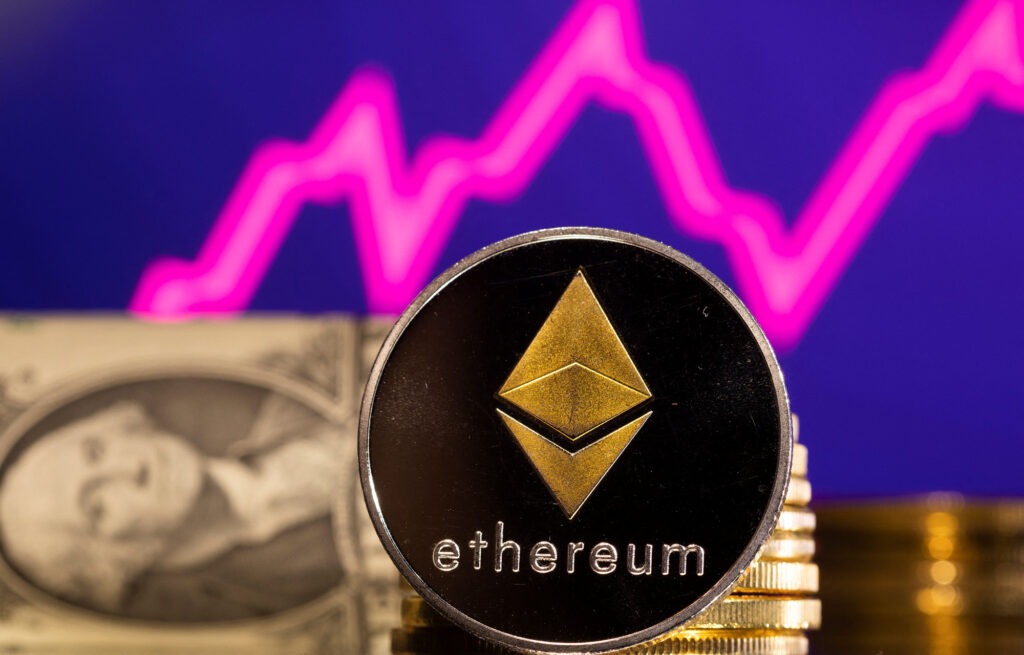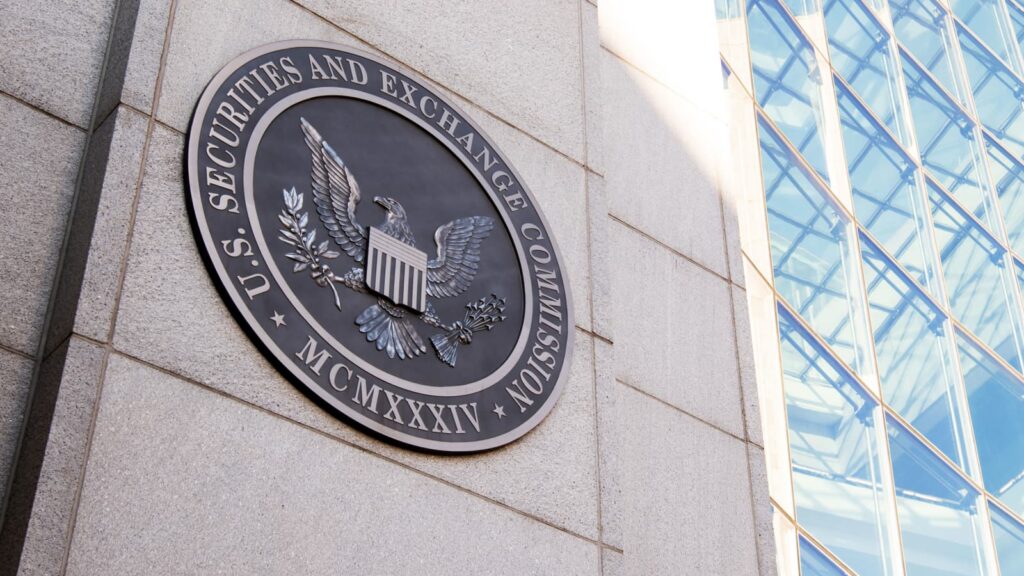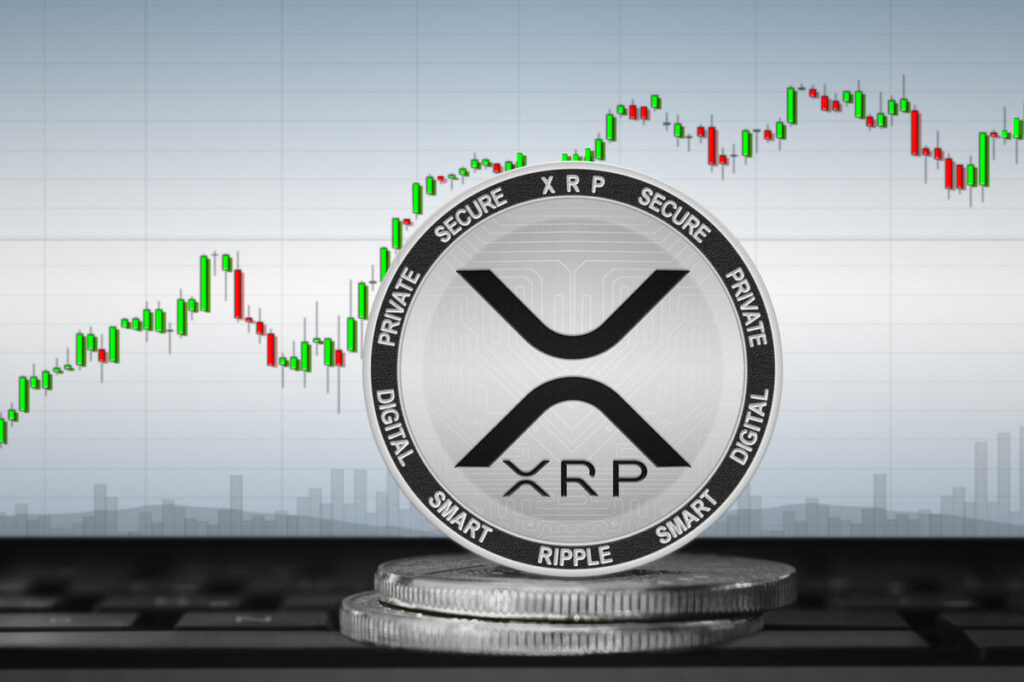JPEG’d, a decentralized finance (DeFi) protocol known for its lending services against collateralized nonfungible tokens (NFTs), has recently confirmed the return of 5,495 Ether (ETH) worth approximately $10 million at current prices.
These funds were previously stolen in a hack that took place on July 30.
In a commendable turn of events, the hacker responsible for the attack agreed to return the funds and received a bounty of 610.6 ETH (about $1.1 million) in exchange for doing so.
The hack had a significant impact on JPEG’d, resulting in a loss of $11.6 million in crypto assets.
However, the team announced on August 4th, through a post on the X platform (formerly known as Twitter), that the returned funds had been deposited back into the JPEG’d decentralized autonomous organization multisig wallet address.
They also stated that they view the incident as a “white-hat rescue,” indicating that they consider the hacker’s return of the funds as a well-intentioned act to identify vulnerabilities in their system.
The larger DeFi ecosystem also suffered a blow in late July when the hacker targeted several liquidity pools on Curve Finance, resulting in total losses estimated to be around $70 million worth of crypto assets.
The hacker exploited a security vulnerability in the Vyper smart contract programming language used in these pools.
Notable projects such as Ellipsis, Alchemix, JPEG’d, and Metronome faced losses of millions of dollars in stolen assets from their liquidity pools, and Curve Finance lost approximately $22 million worth of Curve DAO (CRV) tokens.
READ MORE: Binance-Backed Solv Protocol Raises $6M in New Funding
To recover the stolen funds, Curve, Metronome, and Alchemix united and proposed an initiative on August 3rd, offering the hacker a 10% bounty and immunity from legal action if they returned the remaining 90% of the funds.
Surprisingly, the hacker swiftly agreed to the deal, leading to a gradual return of the stolen funds to the affected projects.
Apart from JPEG’d, the hacker returned 4,820.55 Alchemix ETH (alETH) worth $8.8 million to the Alchemix Finance team and 1 ETH ($1,829) to the Curve Finance team.
This incident serves as a reminder of the vulnerabilities that exist in the DeFi space and highlights the importance of collaboration and community-driven efforts in dealing with such attacks.
While the damage caused by the hack was substantial, the prompt resolution and recovery of a significant portion of the stolen funds showcase the resilience of the DeFi community in the face of challenges.
Other Stories:
Bitcoin to Breach $100,000 by 2024 Amidst Mining Industry Challenges
Adam DeVine Joins Forces with Bitget in Year-Long Crypto Ad Partnership
Gulf Nation Nears Implementation of Virtual Asset Regulations
The Chamber of Digital Commerce (CDC), a prominent U.S. blockchain and digital assets advocacy organization, recently released a detailed analysis of the U.S. Securities and Exchange Commission’s (SEC) lawsuit against Ripple.
The report, titled “SEC v. Ripple Ruling: Impact and Analysis,” delves into the implications of the case’s verdict and its potential consequences for the cryptocurrency industry.
One crucial aspect highlighted in the report is Judge Analisa Torres’s ruling, which establishes a significant precedent by differentiating between an investment contract and the underlying asset.
Specifically, the report focuses on Judge Torres’s categorization of Ripple’s XRP token distributions into three distinct classes: institutional sales, programmatic sales, and other distributions.
By applying the Howey test, she determined whether these distributions constituted an offer and sale of investment contracts.
The CDC expressed its contentment with the ruling, as it aligned with the organization’s amicus brief supporting Ripple.
Perianne Boring, the CDC’s founder and CEO, emphasized the ruling’s importance in laying the groundwork for future legal encounters within the crypto industry.
Boring stressed the need for a level playing field in the digital asset sector and reiterated the group’s commitment to advocating policies that support the United States’ leadership in the digital economy.
While Judge Torres’s ruling was a positive step towards rational crypto regulations, the CDC firmly believes that definitive regulatory clarity can only be achieved through effective legislation by Congress.
The report acknowledges that various blockchain and digital asset regulatory bills have been introduced in both the U.S. House and Senate.
READ MORE: Bitcoin to Breach $100,000 by 2024 Amidst Mining Industry Challenges
However, the CDC expressed uncertainty about the actual enactment of these bills, largely due to constraints posed by the legislative calendar.
Despite these challenges, the CDC remains steadfast in its advocacy for a comprehensive legal framework for digital assets, aiming to create an environment conducive to digital asset product launches.
It is worth noting that in February, the CDC accused the SEC of exceeding its authority and unfairly classifying crypto assets as securities in its insider trading case against former Coinbase employees.
This incident further underscores the importance of clear and well-defined regulations in the cryptocurrency space.
In conclusion, the CDC’s comprehensive report on the SEC’s lawsuit against Ripple sheds light on critical legal distinctions and potential implications for the crypto industry.
The organization remains committed to advocating for clear and effective legislation to provide certainty and support the growth of the digital asset sector in the United States.
Other Stories:
Binance-Backed Solv Protocol Raises $6M in New Funding
Gulf Nation Nears Implementation of Virtual Asset Regulations
Adam DeVine Joins Forces with Bitget in Year-Long Crypto Ad Partnership
Massachusetts securities regulators have initiated an investigation into the use of artificial intelligence (AI) in the securities industry, expressing growing concerns about the potential implications of this emerging technology.
On August 3rd, William Galvin, the Secretary of the Commonwealth in Massachusetts, officially announced the investigation.
The commonwealth’s securities division had previously sent letters of inquiry to both registered and unregistered firms that were known to be utilizing or developing AI for their business operations within the securities industry.
The purpose of these letters was to gather data on how these companies were incorporating AI into their activities.
The targeted firms have until August 16, 2023, to respond to the regulator’s inquiries.
Among the aspects of AI utilization that particularly interest Galvin are the supervisory procedures that firms have in place to ensure that AI systems prioritize the interests of clients over those of the firm itself.
The securities division will also scrutinize the disclosure policies of firms that have already deployed AI.
Galvin stressed the significance of U.S. securities regulators in safeguarding investor protection regarding AI deployment.
He expressed concern that without proper disclosure and conflict consideration, this technology could potentially harm investors.
Aside from supervisory measures, Massachusetts securities regulators are also looking into marketing materials provided to investors that may have been generated using AI.
The global regulatory landscape has increasingly turned its attention to AI due to its rapid growth.
In the second fiscal quarter of 2023, major tech companies mentioned AI much more frequently during their earnings calls, indicating its prominence in business operations.
However, some regulators have been wary of the potential risks associated with AI for years. As early as 2017, the Financial Stability Board (FSB) voiced concerns about AI and machine learning in financial services.
One of the FSB’s specific concerns was the concentration of AI and machine learning services in a few large technology firms, potentially leading to natural monopolies or oligopolies.
This concentration could pose financial stability risks, as the disruption or insolvency of one of these firms could have widespread repercussions in the world of finance.
In light of these growing concerns, the Massachusetts securities division is taking proactive steps to investigate and understand the use of AI in the securities industry, aiming to protect investors and maintain financial stability in the face of advancing technological innovations.
Despite recent fluctuations in Bitcoin’s price, predictions of the cryptocurrency reaching six figures by the end of 2024 persist.
For publicly-listed Bitcoin miners, achieving a price above $100,000 may be imperative for their business profitability rather than just a hopeful forecast.
Bitcoin mining stocks have seen remarkable growth this year, outperforming Bitcoin itself in recent months.
While Bitcoin’s volatility has decreased and it has undergone a period of consolidation, mining companies’ stocks have surged by nearly 100% within a short span.
A report analyzing the mining industry, particularly Riot Platforms, reveals that even though Riot is expected to triple its mining capacity by 2024, it and other miners could face significant challenges due to the halving event.
The halving reduces BTC block rewards by 50%, effectively cutting miners’ revenue in half. To overcome this, some miners may resort to issuing new equity shares to finance their operations.
However, this can dilute existing shares and impede share price growth, even if the company’s fundamentals remain intact.
Furthermore, some mining stocks might already be overvalued at current levels, potentially indicating a decline in momentum if more BTC is sent to exchanges.
As a result, a considerable increase in Bitcoin’s price would be necessary for miners to stay profitable at the current hash rate levels.
The report suggests that Bitcoin would need to trade above $98,000 to justify Riot’s current valuation post-halving.
Hence, holding BTC mining stocks is deemed extremely risky, as the underlying fundamentals may not align with the current valuations that might not account for the upcoming Bitcoin halving.
READ MORE: Goldman Sachs Economists Predict AI to Surpass Electricity and PCs in Financial Impact on US Economy
Another report from Matrixport forecasts Bitcoin reaching $45,000 by year-end and $125,000 by the end of 2024.
The report emphasizes the significance of Bitcoin’s one-year high, historically marking the beginning of new crypto bull markets.
Previous occurrences of this signal were followed by bull markets materializing within 12-18 months.
This six-figure Bitcoin price prediction aligns with other projections, including Standard Chartered’s forecast of a $120,000 Bitcoin price by the end of 2024.
Interestingly, the latter prediction is based on the assumption that BTC miners will hold onto their Bitcoin instead of selling it before the halving.
In conclusion, despite recent price fluctuations, many experts still believe in the possibility of Bitcoin reaching six figures by the end of 2024.
For publicly-listed Bitcoin miners to remain profitable, a significant increase in Bitcoin’s price seems necessary, especially considering the effects of the halving event on mining revenues.
However, as with any financial prediction, there are inherent risks and uncertainties to be considered.
Other Stories:
Robinhood Turns Profitable in Q2 2023 Despite Revenue Dip
Meta, the parent company of Facebook and Instagram, is planning to launch advanced artificial intelligence (AI) chatbots that exhibit human-like personalities, as part of its efforts to enhance user retention.
According to the Financial Times, insiders revealed that prototypes of these chatbots are already in development, with the final products capable of engaging in discussions with users at a level comparable to human interaction.
Expected to be released as early as next month, the chatbots will come in various personalities, referred to as “personas” by Meta staff.
The bots will take the form of different characters, including one that mimics the speech style of former United States president Abraham Lincoln and another designed to provide travel advice with a surfer’s vernacular.
The main purpose of these chatbots, according to sources, will be to offer recommendations and introduce new search functionalities, while also serving as an enjoyable interactive product for users.
Cointelegraph reached out to Meta for additional comments on the matter, but no response was received at the time of publication.
To ensure accuracy and prevent any rule-breaking speech, the company may automate checks on the chatbots’ outputs, as stated by a source from the Financial Times.
This move comes as Meta places significant emphasis on user retention.
READ MORE: SEC Chairman Gary Gensler Raises Alarm Over Widespread Fraud in Crypto Market
During the recent second-quarter earnings call on July 26, Meta’s CEO, Mark Zuckerberg, highlighted the company’s latest product, Threads, which has seen an unexpected increase in daily user engagement. Zuckerberg emphasized that Meta is primarily focused on user retention for Threads.
Additionally, the earnings call disclosed an investment of $3.7 billion into the development of the metaverse.
The introduction of these sophisticated chatbots also opens up opportunities for Meta to collect substantial amounts of user data.
However, it is worth noting that OpenAI, the creator of the popular AI chatbot ChatGPT, has faced legal challenges, including a class-action lawsuit alleging data theft by its own bots.
Meta’s initiative to integrate AI chatbots with human-like personalities reflects the growing importance of AI in user engagement and the potential for innovative advancements in the field of artificial intelligence.
Nevertheless, concerns surrounding data privacy and security will continue to be closely monitored, considering the impact of AI on user data collection and usage.
Other Stories:
Bitcoin’s Reduced Volatility Sparks Anticipation for Exciting Long-Term Bull Signal
BNB Smart Chain (BSC) Hit by Copycat Attacks
Liquid Staking Tokens Poised to Dethrone Ethereum’s Ether (ETH) as Dominant DeFi Asset
On July 30th, a significant security breach occurred on Curve Finance, a decentralized finance (DeFi) platform, resulting in the exploitation of several stable pools and causing losses exceeding $47 million.
The exploit was related to vulnerabilities in Vyper, a contract-oriented programming language utilized on the Ethereum Virtual Machine (EVM), specifically affecting versions 0.2.15, 0.2.16, and 0.3.0.
Vyper, known for its Pythonic characteristics, has been a popular choice for Python developers entering the world of Web3.
However, the investigation revealed that the affected versions failed to implement the reentrancy guard correctly.
This guard is crucial in preventing multiple functions from executing simultaneously, thereby safeguarding contracts from reentrancy attacks, which can deplete all funds from the contract.
Ancilia, a security firm, analyzed the affected contracts and reported that 136 contracts were using Vyper 0.2.15 with reentrant protection, 98 contracts used Vyper 0.2.16, and 226 contracts used Vyper 0.3.0. Vyper urged all projects relying on these versions to reach out immediately for further guidance and support.
Several DeFi projects were impacted by the exploit. For instance, decentralized exchange Ellipsis reported the exploitation of a small number of stable pools with BNB using an outdated Vyper compiler.
Additionally, Alchemix’s alETH-ETH witnessed an outflow of $13.6 million, while JPEGd’s pETH-ETH pool suffered an $11.4 million loss, and Metronome’s sETH-ETH pool lost $1.6 million.
READ MORE: Pro-XRP Lawyer Alleges SEC’s Actions Driven by Safeguarding Corporate Capitalism
Moreover, Curve Finance’s CEO, Michael Egorov, confirmed that over $22 million worth of CRV tokens (32 million CRV tokens) were drained from the swap pool in a Telegram channel.
The security breach sent shockwaves through the DeFi ecosystem, leading to a flurry of transactions across pools and prompting white hat hackers to launch a rescue operation.
As a consequence of the news, Curve DAO (CRV), the utility token for Curve Finance, experienced a decline of over 5% in value, as reported by CoinMarketCap.
CRV’s liquidity had already dwindled in previous months, making it susceptible to significant price fluctuations.
Despite the severity of the attack, certain pools like crvUSD contracts remained unaffected.
Nevertheless, this incident added to a series of attacks and incidents that have targeted the Curve Finance ecosystem.
Just days prior to this breach, Conic Finance, a platform built on Curve Finance’s omnipool, was exploited, resulting in a theft of $3.26 million in Ether (ETH).
The DeFi space has faced numerous attacks and scams in recent months, with a staggering $204 million reportedly swindled in the second quarter of 2023 alone, according to a report by De.Fi, a Web3 portfolio app.
These incidents highlight the importance of robust security measures and continual efforts to fortify DeFi protocols against potential threats.
Other Stories:
Kyrgyzstan Expands Cryptocurrency Mining with Government Backing at Hydro Power Plant
French Data Protection Agency Investigates Worldcoin
Worldcoin’s Iris Scanning Project Raises Privacy and Sovereignty Concern
Liquid staking tokens (LSTs) are on track to replace Ethereum’s native cryptocurrency, Ether (ETH).
While ETH currently stands at $1,869, the LST market has already reached an impressive value of approximately $17 billion since Ethereum’s Merge.
The advantages of LSTs over traditional ETH are becoming increasingly evident to liquidity providers (LPs), signaling a new era of LST dominance.
Following the Merge, ETH can be staked to yield around 4% annually, depending on various factors.
This development is significant, considering ETH’s stability compared to more volatile cryptocurrencies. ETH now offers a combination of staking yields and gradual price stability and appreciation.
This new ability to stake ETH and earn yield presents ETH holders with a dilemma: should they provide liquidity with their ETH and hope for fees, or should they stake their ETH for a surefire yield?
LSTs offer a solution for LPs, as they unlock the value of staked tokens, providing a liquid “receipt” token that can be freely traded and used as collateral within decentralized finance (DeFi) protocols.
\LSTs grant tokenholders flexibility to participate in various activities across different networks while still earning ETH staking rewards.
LPs can now earn staking yields from ETH while utilizing LSTs to provide liquidity in automated market makers (AMMs).
READ MORE: French Data Protection Agency Investigates Worldcoin
Additionally, LSTs offer a more accessible entry point than regular ETH staking, appealing to new audiences and smaller investors.
The argument that LSTs will replace ETH in DeFi becomes apparent when considering that supplying ETH to an AMM instead of an LST results in sacrificing roughly 4% APR.
As the crypto space continues to evolve, LSTs offer a more effective way to earn yield, making their adoption highly likely.
While the transition to LSTs will take time, early trends indicate a growing interest in liquid staking platforms.
The Ethereum Shanghai upgrade, enabling easy unstaking, has paved the way for LSTs’ potential growth.
Already, protocols like Lido and Swell Network are experiencing significant increases in staked ETH.
The widespread adoption of LSTs could lead to their dominance in decentralized exchanges, potentially replacing ETH altogether as the go-to token in crypto.
Embracing LSTs could attract new users and inject new life into the industry after a period of stagnation.
In conclusion, while ETH remains familiar to many, LSTs offer a compelling alternative in the DeFi space.
Exploring the emerging LST ecosystem presents a unique opportunity for investors to maximize their impact and potentially contribute to a positive transformation in the industry.
With the rise of LSTFi, the crypto landscape may witness a shift where all ETH is staked through liquid staking protocols, and LSTs become the primary choice for trading and other activities.
Other Stories:
Worldcoin’s Iris Scanning Project Raises Privacy and Sovereignty Concern
Kyrgyzstan Expands Cryptocurrency Mining with Government Backing at Hydro Power Plant
The United States Senate recently approved the National Defense Authorization Act (NDAA), a crucial law determining the agenda and funding for the Department of Defense.
The bill allocates an impressive $886 billion for federal defense, coupled with a 5.2% pay increase for service members.
Beyond its focus on funding, the NDAA has far-reaching implications, extending its influence into various industries, including the digital asset ecosystem.
Of particular interest to the cryptocurrency community is the bill’s targeting of privacy coins and crypto mixers.
These tools have the potential to obscure users’ identities and make it challenging for authorities to track blockchain transactions, facilitating crypto-related fraud.
Senators Elizabeth Warren, Roger Marshall, Cynthia Lummis, and Kirsten Gillibrand were among the proponents of a cryptocurrency amendment in the bill, aimed at reducing fraudulent activities within the crypto space.
The NDAA empowers authorities to bolster crypto regulations across the board, especially regarding the operation of virtual asset services and the assessment of risks involved.
The legislation also empowers the Treasury Department to crack down on anonymous crypto transactions facilitated by certain companies, specifically addressing money laundering and related offenses.
Crypto mixers, such as Tornado Cash, and privacy coins have faced criticism from authorities for enabling money laundering and illicit fund movements.
READ MORE: 3 Best Crypto Projects That Will Boom In 2023 & The Next Bull Run
Last year, the Treasury Department imposed sanctions on Tornado Cash following a major theft involving the Lazarus Group, a North Korean-associated company.
The NDAA also tackles compliance among stablecoin issuers, sparking debates across social media spaces.
The bill is expected to increase Know Your Customer (KYC) and Anti-Money Laundering (AML) regulations for stablecoin firms, many of which are currently operating without stringent requirements.
Critics fear that the bill may limit the use of stablecoins, giving the government more power, while supporters argue that it will protect investors and prevent illegal transactions, ultimately instilling greater confidence in the investor community.
Furthermore, the NDAA will require US companies to disclose their investments in China, with Senator Bob Casey stressing the importance of understanding the depth of “critical technology being transferred to adversaries.”
In conclusion, the NDAA’s passage has brought significant changes to various sectors, including the digital asset industry.
By targeting privacy coins, crypto mixers, and stablecoin issuers, the bill aims to reduce fraud and increase transparency in the cryptocurrency space.
While the implications of these regulations are still subject to debate, their potential impact on investor confidence and the overall stability of the industry remains to be seen.
Other Stories:
SEC and Binance Oppose Eeon’s Intervention in Crypto Exchange Lawsuit
The United States Securities and Exchange Commission (SEC) faced a significant setback on July 28 when the United States Court of Appeals for the District of Columbia Circuit overturned a ruling by the regulator regarding SPIKES Index securities.
The court ruled that these securities should be treated as “securities futures” instead of regular futures, stating that the SEC’s initial order was “arbitrary and capricious.”
This decision is linked to a 2020 order in which the SEC exempted the SPIKES Index, a stock volatility index, from the definition of security futures.
The motive behind this move was to eliminate heavy taxes and regulatory requirements associated with the term “security” and promote competition among volatility indexes.
Chief Judge Sri Srinivasan pointed out that the exemption granted by the SEC was considered arbitrary and capricious because the regulator failed to adequately explain its rationale and neglected to consider important aspects of the problem.
The court also highlighted the SEC’s oversight in failing to consider the possibility that granting exemptive relief could lead to confusion among market participants.
As a result of the ruling, SPIKES Index futures are now categorized as “securities futures” rather than just “futures.” Market participants have a three-month window to wind down their transactions under this new classification.
READ MORE: Revealed: The Best Crypto Marketing & PR Agency
The decision’s implications may extend beyond the specific case, as it could offer insight into potential outcomes for legal battles between crypto firms and the SEC.
Interestingly, two of the panel’s judges are currently examining Grayscale’s challenge to an SEC decision that denied its request to convert the Grayscale Bitcoin Trust to a spot Bitcoin exchange-traded fund (ETF).
The ruling serves as a reminder that the SEC is not invulnerable and can lose court cases.
It also sheds light on the importance of clarity and sound reasoning in regulatory decisions, particularly when it comes to defining financial instruments and their associated regulations.
In conclusion, the recent Court of Appeals decision represents a significant setback for the SEC and highlights the need for well-reasoned and transparent regulatory actions.
As market participants adjust to the new classification, the ruling’s broader impact may influence future legal battles involving the SEC and other financial entities.
Other Stories:
3 Best Crypto Projects That Will Boom In 2023 & The Next Bull Run
SEC and Binance Oppose Eeon’s Intervention in Crypto Exchange Lawsuit
Pro-XRP advocate, John Deaton, has voiced his belief that the actions taken by the United States Securities and Exchange Commission (SEC) against the crypto industry are not solely focused on protecting investors but driven by a broader motive to safeguard corporate capitalism.
Deaton has pointed out what he sees as an attack on cryptocurrencies, with specific reference to the SEC’s actions directed at Coinbase and Ripple.
In his statements, he has delved into several aspects, including the accredited investor rules, the SEC’s approach to regulating cryptocurrencies, and its treatment of retail investors in the Ripple case.
Taking to Twitter, Deaton has emphasized his conviction that the U.S. operates within a framework of corporate capitalism, rather than a genuine capitalist system.
He has cited various elements of the current financial landscape to bolster his argument.
One of Deaton’s key concerns revolves around the SEC’s allocation of limited resources towards Section 5 cases and its emphasis on targeting secondary markets on exchanges, rather than focusing on addressing fraudulent activities within the crypto space.
According to him, this misplaced focus could stifle innovation and hinder the growth of the burgeoning cryptocurrency industry.
In addition, Deaton has brought attention to the SEC’s opposition to allowing retail investors to participate as friends of the court (amici curiae) in the Ripple case.
READ MORE: SEC and Binance Oppose Eeon’s Intervention in Crypto Exchange Lawsuit
He suggests that this reluctance to consider the views of retail investors reinforces the perception that the regulatory body may prioritize the interests of larger financial institutions over those of individual investors.
Another major concern raised by Deaton is the perceived double standard in crypto regulation.
He criticizes the SEC for not engaging in dialogue with proactive entities like Coinbase while highlighting that SEC Chair Gary Gensler had multiple meetings with Sam Bankman-Fried, the former CEO of the collapsed FTX exchange.
This unequal treatment raises questions about the effectiveness and fairness of the regulatory body, as well as the overall framework for digital assets.
Deaton fears that such disparate treatment of various industry players may hinder the growth of innovative startups while potentially favoring more established entities.
In conclusion, John Deaton contends that the SEC’s actions against the crypto industry are driven by a broader motive to safeguard corporate capitalism, rather than solely prioritizing the protection of investors.
His concerns about the misplacement of priorities, the treatment of retail investors, and the potential double standard in regulation call for a more transparent and equitable approach to nurturing the cryptocurrency industry’s growth.
Other Stories:
3 Best Crypto Projects That Will Boom In 2023 & The Next Bull Run










